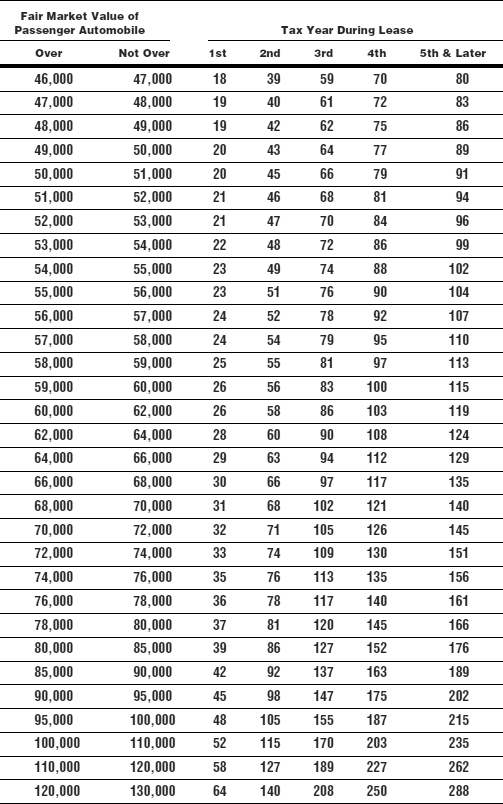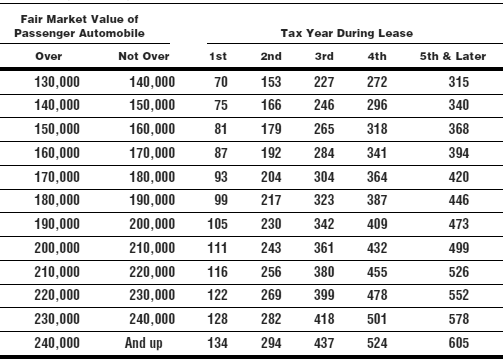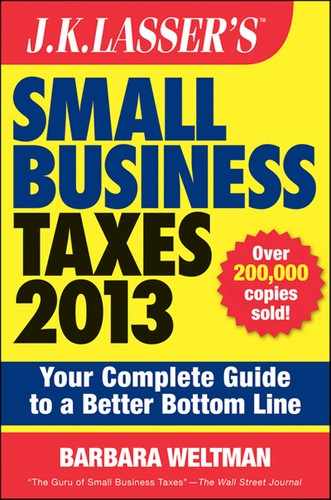Leasing a Car for Business
Leasing a business car is a popular alternative to buying one. If you use the car entirely for business, the cost of leasing is fully deductible. If you make advance payments, you must spread these payments over the entire lease period and deduct them accordingly. You cannot depreciate a car you lease, because depreciation applies only to property that is owned. However, you can choose to deduct the standard mileage rate in lieu of actual expenses (including lease payments).
Lease with an Option to Buy
When you have this arrangement, are you leasing or buying the car? The answer depends on:
- The intent of the parties to the transaction.
- If any equity results from the arrangement.
- If any interest is paid.
- If the fair market value of the car is less than the lease payment or option payment when the option to buy is exercised.
When the factors support a lease arrangement, the payments are deductible. If, however, the factors support a purchase agreement, the payments are not deductible.
Inclusion Amount
If the car price exceeds a certain amount and you deduct your actual costs (you do not use the standard mileage rate), you may have to include in income an inclusion amount. This is because the law seeks to equate buying with leasing. Since there is a dollar limit on the amount of depreciation that can be claimed on a luxury car that is owned, the law also requires an amount to be included in income as an offset to high lease payments on a car that is leased. In essence, the inclusion amount seeks to limit your deduction for lease payments to what it would be if you owned the car and claimed depreciation. The inclusion amount, which is simply an amount that you add to your other income, applies if a car is leased for more than 30 days and its value exceeds a certain amount. Amounts are adjusted annually for inflation. The inclusion amount is added to income only so long as you lease the car. It is based on the value of the car as of the first day of the lease term. If the capitalized cost of the car is specified in the lease agreement, that amount is considered to be the fair market value of the car. At the start of the lease, you can see what your inclusion amount will be for that year and for all subsequent years. The inclusion amount is based on a percentage of the fair market value of the car at the time the lease begins. Different inclusion amounts apply to gas-driven cars and to electric cars.
The inclusion amount applies only if the fair market value of the car when the lease began was more than $15,500 in 2007, $18,500 in 2008 and 2009, $16,700 in 2010, and $18,500 in 2011 and 2012. Different thresholds for inclusion amounts are applied for cars leased prior to 2007.
Inclusion amounts in Table 9.9 are taken from IRS tables, which can be found in the appendix to IRS Publication 463, Travel, Entertainment, Gift, and Car Expenses. Those rates apply to cars first leased in 2012. The full amount in the table applies if the car is leased for the full year and used entirely for business. If the car is leased for less than the full year, or if it is used partly for personal purposes, the inclusion amount must be allocated to business use for the period of the year during which it was used. The allocation for part-year use is made on a day-by-day basis.
Remember that if you use your car for commuting or other nonbusiness purposes, you cannot deduct that allocable part of the lease; there is no inclusion amount for this portion.
There are separate inclusion amount tables for trucks and vans first leased in 2012. This information can be found in IRS Rev. Proc. 2012-23 (Table 6).
TABLE 9.9 Dollar Amounts for Passenger Automobiles (That Are Not Trucks or Vans) with a Lease Term Beginning in Calendar Year 2012



Should You Lease or Buy?
The decision to lease or buy a car used for business is not an easy one. There are many financial advantages to leasing. Most important is that you need not put forth more than a small amount of up-front cash to lease, whereas a purchase generally requires a significant down payment. So leasing can enable you to drive a more expensive car than you could afford to buy. However, as a practical matter, if a car is driven extensively (more than 15,000 miles per year), leasing may not make sense because of the annual mileage limit and the charge for excess mileage. In such cases, owning may be preferable. Take into consideration that at the end of the lease term you own nothing, whereas at the end of the same period of time with a purchased car you own an asset that can be sold or traded in for a newer model. And, if you want to get out of the lease before the end of the lease term, there may be substantial penalties and fees (although there may be ways to avoid them).
Whether there are any tax advantages is difficult to say. With leasing, you deduct the entire lease charge; with a purchase, you generally deduct depreciation, although you may be able to fully expense up to $25,000 for a car weighing more than 6,000 pounds. Given the current dollar limits on depreciation, this may not be as great as the lease charge. While the inclusion amount is designed to offset this differential, it may not be sufficient to make leasing and depreciation equate.
The only way to know whether leasing or buying is more advantageous tax-wise is to run the numbers. Project your deductible costs of leasing versus your costs of purchasing the car.
